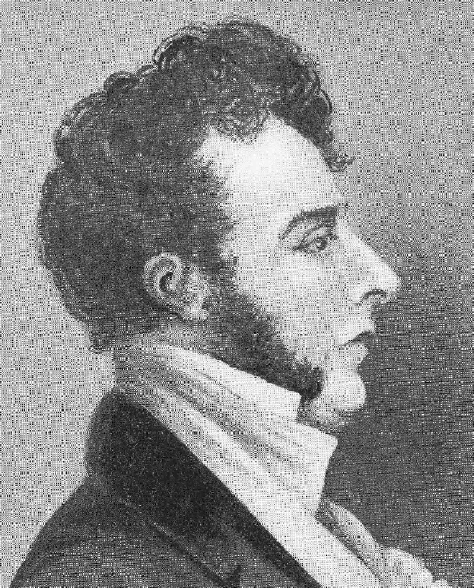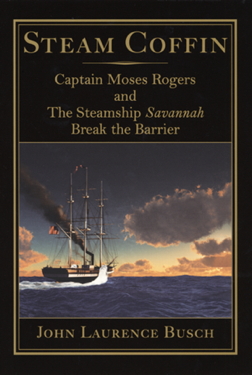Goddard Space Flight Center, Greenbelt, Maryland 20771
ENGINEERING COLLOQUIUM
Monday, February 4, 2013 / 3:30 PM, Building 3 Auditorium

Captain Moses Rogers

John Laurence Busch
"Steam Coffin: Building the First Steamship in History"
ABSTRACT -- In 1807, a brilliant, creative, and controversial American by the name of Robert Fulton declared his intent to build an experimental "steamboat," which would be used to initiate a continuous passenger service between New York City and Albany, New York. With the success of his North River Steam Boat, Fulton showed that it was possible to alter artificially both a person's location and the amount of time it took to change it. In so doing, he also broke through the enormous psychological barrier that had existed in people's minds; it was, in fact, possible to overcome Nature to practical effect. It took time for many people to accept Robert Fulton's triumph as the truth.
One man who did not need to be convinced was a sloop captain named Moses Rogers. He had witnessed the first successful runs of the North River Steam Boat to Albany, and the experience gave him steamboat fever.
Moses soon became one of the first steamboat captains in history, taking command of one of Fulton's first rivals, the Phoenix. In his new profession, Moses learned not only the technicalities of this revolutionary invention, but the peculiarities of a traveling public just getting used to this new mode of transport.
Running these steamboats on rivers, lakes and bays became a normal and accepted part of American life in the years immediately following Fulton's triumph. But taking such a vessel on a voyage across the ocean was a different proposition altogether. Experienced mariners didn't think it could be done. These early steamboats, they declared, were just too flimsy and unwieldy to withstand the dangers of the deep.
But Moses believed otherwise. Combining his knowledge of the old mode of transport — sail — with the new mode of transport — steam — he set out to design a vessel that was capable of overcoming the many dangers of the sea. This craft would be not a steamboat, but a "steamship," the first of its kind.
This presentation will show how Captain Rogers designed and built this first example of globalized high technology in history...nearly two centuries ago!
SPEAKER -- John Laurence Busch is an independent historian who has devoted years of research to discovering the true story of Captain Moses Rogers and the steamship Savannah. This led him to scour archives and libraries from Portland, Maine to Savannah, Georgia, and across the Atlantic Ocean to the far reaches of Europe, to piece together the life and career of Moses Rogers, as well as the actors and events that resulted in the formation of the Savannah Steam Ship Company, and the construction of the steamship Savannah.
The result is Steam Coffin, the most descriptive account of the saga of Captain Moses Rogers and the steamship Savannah ever written. The foundation for such a story rests upon the contents of never-before-published manuscripts and newspaper articles, which provide an abundance of new details illuminating the actions and attitudes of those who participated in, and witnessed, the creation and voyage of the Savannah. John's careful weaving together of many disparate sources results in a narrative that recalls both the fabric and style used in storytellings of old. It also shows just what Captain Moses Rogers and the steamship Savannah accomplished for eternity.
Steam Coffin has received positive reviews from 25 periodicals in the United States, Canada, the United Kingdom and Australia. John has made over 200 presentations on Captain Rogers and the Savannah to a wide variety of audiences, from Maine to Georgia to Montana, and across the Atlantic Ocean to Europe. For additional background, visit www.steamcoffin.com.
Colloquium Committee Sponsor: Brent Warner
Engineering Colloquium home page: https://ecolloq.gsfc.nasa.gov